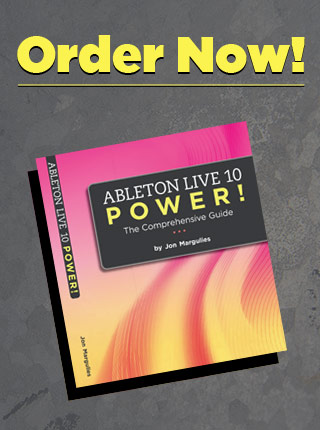Up until this point, I’ve been presenting what amounts to a step-by-step method for preparing audio to be used in Live. Now we’ve reached a point where there are different paths you can follow depending on the type of material you’re working with, what you’re doing with it, and your own personal preference. As we move forward, I’m going to present a number of different methods all worth being familiar with.
One way to proceed is to right-click on the Start Marker (or the first Warp Marker) and manually invoke Auto Warp:
Five Warp options appear. Right now, we’re mostly interested in the first three.
Warp From Here means you’re asking Live to analyze the audio from this point forward and determine it’s tempo. Use this method if you’re not sure whether or not the audio has tempo fluctuations.
Warp From Here (Start at X BPM) means you want Live to determine the tempo, but you’re giving it a hint to use the current master tempo as a starting point, and to expect that there will be tempo fluctuations.
Warp From Here (Straight) means you want live to determine the tempo, but you’re giving the hint that the tempo does not fluctuate. This method will never result in additional warp markers being created.
Now, you might be wondering why I’m presenting Auto Warp as an option if I suggested turning it off earlier. The reason is that using Auto Warp is a very different experience once you’ve taken some of the ealier steps I’ve suggested. Once you’ve eliminated any intro material from the equation by placing the start marker at the first clear downbeat, and tapped in the approximate tempo, you’ve considerably simplified the work that Auto Warp has to do.
Does it always work? Nope. But sometimes I’ve been absolutely amazed at how well it does work with a weird old blues recording that would have taken a long time to do manually. (I’ve also seen it get hopefully confused by steady tempo electronic music with a lot of syncopation.)





